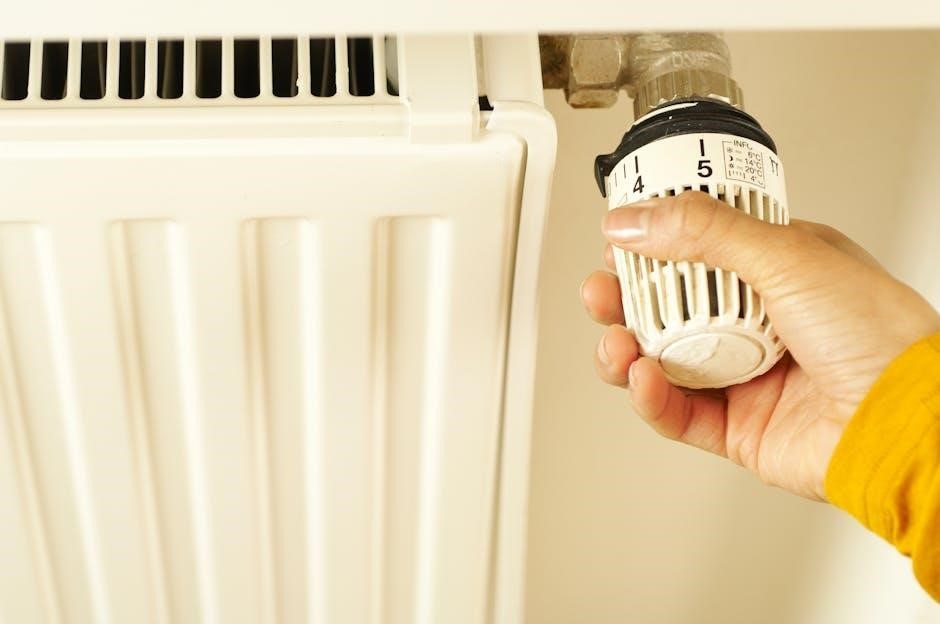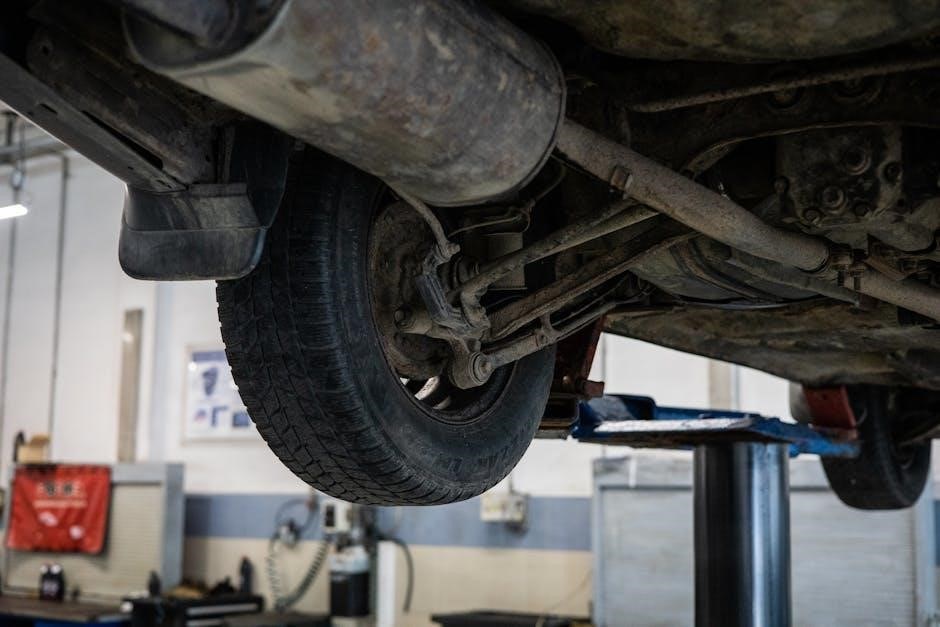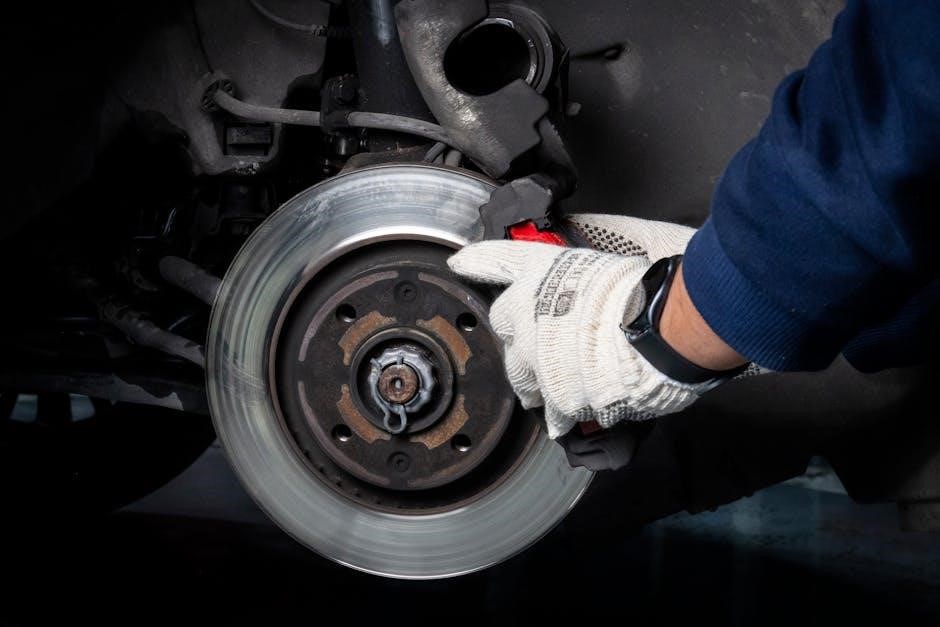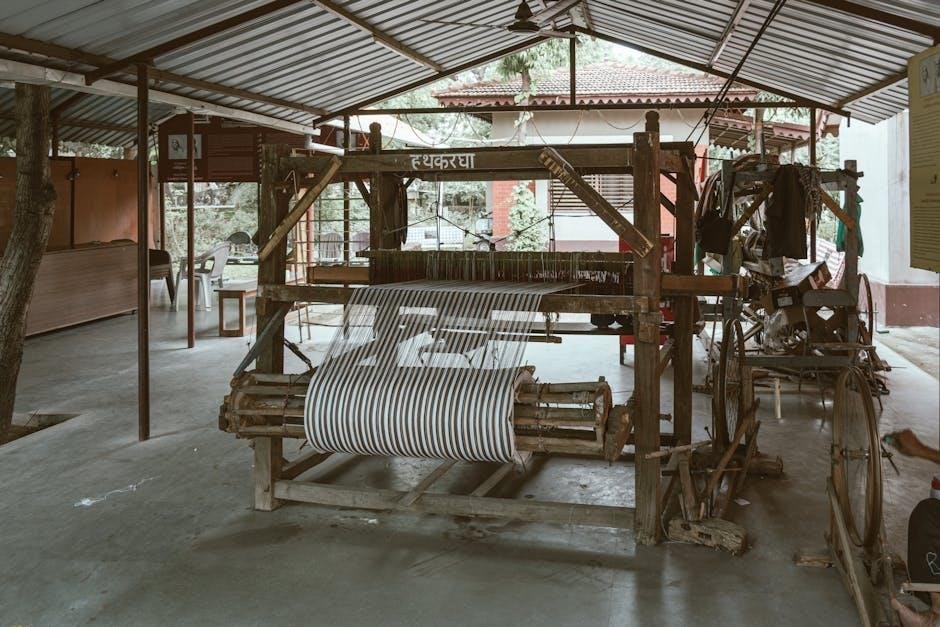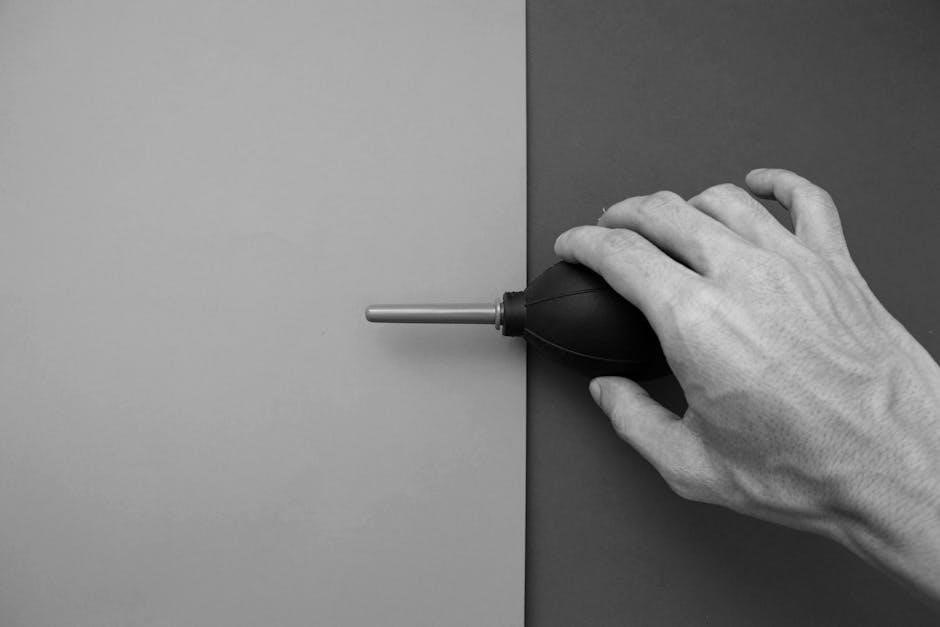The official VEX High Stakes Game Manual provides comprehensive guidelines for participants‚ outlining rules‚ scoring‚ and strategies. Version 2.1‚ released on 10/9/2025‚ includes updated gameplay specifics and field configurations. Teams must navigate scoring blocks‚ controlling zones‚ and clearing loaders efficiently. The manual serves as the ultimate resource for competition preparation‚ ensuring fairness and consistency in play.
Overview of the VEX High Stakes Game
The VEX High Stakes game challenges teams to score higher than their opponents by strategically placing colored blocks into goals‚ controlling zones‚ and clearing loaders. Teams compete in alliances‚ aiming to maximize their points through teamwork and precise robot operations. The game field features two types of blocks—low and high—each offering varying points when scored in designated goals. Controlling zones earns additional points‚ while clearing loaders aids in maintaining a steady supply of blocks. As outlined in the High Stakes Game Manual‚ Version 2.1‚ updated rules and field configurations encourage diverse strategies for success. This high-energy competition emphasizes efficiency‚ adaptability‚ and innovation in robot design and gameplay mechanics. Teams must balance offense and defense to secure a winning advantage‚ making the VEX High Stakes a thrilling and competitive experience.
Objective of the Game
The objective of the VEX High Stakes game is to achieve a higher score than opposing teams by strategically placing blocks into goals and controlling zones. Teams aim to score points by utilizing colored blocks‚ with additional rewards for zone control and loader clearing. As per the official High Stakes Game Manual‚ Version 2.1‚ maximizing these opportunities is key to securing victory in the competition.
What is VEX Robotics Competition?
The VEX Robotics Competition is a global event where teams design‚ build‚ and program robots to compete in the High Stakes game. Participants work collaboratively to solve challenges and earn points by scoring blocks in goals‚ controlling zones‚ and clearing loaders. The competition emphasizes innovation‚ teamwork‚ and problem-solving skills‚ encouraging participants to push the boundaries of robotics and engineering. Teams must follow the official Game Manual‚ Version 2.1‚ and adapt to new rules and strategies to excel. Success in the competition depends on mastering the game mechanics and demonstrating creativity under pressure.

How to Get Started with VEX High Stakes
Gathering essential equipment‚ forming a team‚ and understanding the game field layout are crucial first steps. Study the official High Stakes Game Manual to master the rules and scoring system. Practice design and programming to optimize your robot’s performance. Register for competitions and prepare for match specifics and time limits to ensure success in the challenging VEX Robotics Competition.

Gathering Equipment and Tools
For the VEX High Stakes competition‚ teams must acquire essential robotics equipment and tools. This includes a VEX V5 Robot‚ programming software‚ and necessary accessories like sensors‚ motors‚ and structural parts. Teams also need building materials such as vex connectors‚ wheels‚ and belts to construct their robots. Additionally‚ power tools‚ measuring tools‚ and safety gear are crucial for assembly and testing. Proper tools ensure efficient robot design and functionality‚ preparing teams for the game’s demands.
Setting Up Your Team and Robot
Organizing your team and configuring your robot are critical steps for success in the VEX High Stakes competition. Assign roles and responsibilities to team members to ensure efficient teamwork and communication. Begin by reviewing the Game Manual to understand the objectives and scoring system. Use the VEX V5 system to assemble your robot‚ focusing on mobility‚ stability‚ and adaptability for scoring blocks or clearing loaders. Program your robot with strategies that prioritize key actions like manipulating blocks and controlling zones. Effective teamwork and a well-designed robot are essential to achieving a higher score and securing victory in matches.
Understanding the Game Field Layout
In the VEX High Stakes competition‚ the game field layout is meticulously designed to challenge teams’ strategic and robotic skills. The field features distinct zones‚ including scoring areas and controlling zones‚ where robots can earn bonus points by occupying specific spaces. Understanding the layout is crucial for maximizing your team’s performance. Blocks and goals are strategically placed‚ allowing robots to score points by manipulating and positioning blocks accurately. The layout also includes pathways for efficient navigation and areas for defensive strategies to protect your alliance’s progress. Teams must analyze the field configuration to design robots capable of tackling diverse challenges‚ ensuring optimal performance during matches.

Understanding the Game Mechanics
Game mechanics in the VEX High Stakes competition revolve around scoring blocks‚ controlling zones‚ and avoiding penalties. Teams must master the art of efficiently clearing loaders while strategically navigating the game field. Understanding these mechanics is essential for crafting effective team strategies and ensuring competitive success.
Game Objectives and Scoring
The primary objective of the VEX High Stakes game is to score points by strategically placing blocks into designated goal zones. Teams aim to accumulate the highest score possible‚ with higher zones yielding more points‚ encouraging vertical stacking to maximize efficiency. Additionally‚ controlling specific zones on the game field can provide continuous points‚ enhancing a team’s overall score throughout the match. The scoring system rewards both the quantity and strategic placement of blocks‚ emphasizing the importance of accurate targeting. Penalties‚ resulting from rule violations such as excessive force or improper handling‚ can hinder a team’s performance‚ underscoring the need to adhere strictly to the competition guidelines. The manual provides detailed information on these objectives and scoring mechanisms‚ ensuring all participants have a clear understanding to optimize their strategies and game plans for success. Balancing scoring efficiency with zone control is essential for teams to achieve high scores while maintaining compliance with the rules.
Types of Blocks and Goals
The VEX High Stakes game features a variety of blocks and goals to challenge teams’ creativity and precision. Standard blocks are commonly used for scoring‚ while special blocks offer additional points or unique advantages. Goals on the field include the driver station goal‚ alliance goal‚ neutral goal‚ and opponent goal. Teams must strategically place blocks into these zones to maximize their score. Additionally‚ certain zones allow for continuous scoring‚ while others provide temporary advantages. Understanding the differences between block types and goal zones is crucial for effective gameplay‚ as each contributes uniquely to achieving the game’s objectives.
Controlling Zones and Clearing Loaders
In the VEX High Stakes game‚ controlling zones and clearing loaders are critical strategies for success. Teams aim to dominate specific zones on the field‚ securing points by maintaining control for extended periods. Clearing loaders involves removing blocks from loader stations‚ preventing opponents from utilizing them to score. Mastering these mechanics enhances scoring potential and disrupts rival teams’ gameplay. Teams must balance offensive and defensive tactics to excel in these areas‚ ensuring a competitive edge throughout the match.

Designing Your VEX Robot for High Stakes
Designing a competitive VEX Robotics machine for High Stakes involves selecting optimal components like drives‚ manipulators‚ and sensors. Teams must balance functionality and durability while adhering to competition guidelines. Efficient design ensures your robot can score blocks‚ control zones‚ and clear loaders effectively‚ maximizing performance on the field.
Key Mechanical Components
Key mechanical components for VEX High Stakes include intake systems designed to efficiently gather blocks‚ precision manipulators for accurate placement into goals‚ and robust drivetrains ensuring agility and control. Sensors enhance performance by detecting zones and tracking game elements. Structural integrity is crucial for durability‚ enabling the robot to withstand competition pressures while maintaining precision and functionality. These components work together to optimize scoring‚ zone control‚ and loader clearing‚ ensuring competitive success.
Programming Considerations
Programming for VEX High Stakes requires precise algorithms to optimize autonomous and driver-controlled operations. Focus on integrating sensory data to identify block positions‚ zone statuses‚ and loader capacities. Optimize algorithms for efficient scoring and strategic zone control. Ensure smooth communication between sensors‚ motors‚ and microcontrollers for seamless robot operation. Test and refine code for reliability and adaptability to varying game scenarios. Leverage libraries for advanced functions‚ ensuring compatibility with VEX hardware. Strive for clean‚ modular code for easier debugging and updates. Consider real-time feedback to adjust strategies dynamically during matches. Proper programming ensures the robot can navigate the field‚ interact with game elements‚ and achieve high scores effectively.
Optimizing Robot Performance
Optimizing robot performance in the VEX High Stakes game involves maximizing efficiency and effectiveness. Key strategies include enhancing both design and programming to ensure tasks like block handling‚ zone control‚ and loader clearance are executed swiftly and accurately. This can be achieved through careful selection of components‚ effective weight distribution‚ and strategic coding practices that enable precise sensor and motor coordination. Regular testing under varied conditions helps identify areas needing improvement. Team communication and collaboration are also crucial for addressing challenges and refining strategies. Adapting proven tactics from past competitions and adhering to competition guidelines further aids in achieving peak performance. Ultimately‚ a holistic approach integrating mechanical design‚ efficient programming‚ and robust teamwork is essential for optimizing the robot’s capabilities and securing success on the competition field.

Game Rules and Regulations
The VEX High Stakes rules ensure fair competition‚ emphasizing alliance collaboration‚ time limits‚ and penalties. Teams must adhere to these guidelines while scoring blocks and controlling zones. Efficient strategies and strict compliance with regulations are crucial for success in this dynamic and competitive environment.
Competition Rules and Guidelines
Understanding the competition rules is essential for success in VEX High Stakes. Teams must follow guidelines to ensure fair play and adherence to safety standards. Alliance teams are formed to collaborate strategically‚ aiming to score higher than opposing alliances. Key objectives include scoring blocks in goals‚ controlling zones‚ and clearing loaders efficiently. Teams must also navigate the game field and interact with specific game elements as outlined in the official Game Manual. Effective communication and teamwork are critical to achieving victory while maintaining compliance with all competition regulations. Always prioritize rule adherence to ensure a fair and competitive environment for all participants.
match Specifics and Time Limits
Match Specifics and Time Limits
Each VEX High Stakes match follows strict timing protocols to ensure fair competition. A typical match consists of a 15-second autonomous period‚ followed by a 1-minute driver-controlled phase. Teams must adhere to these time limits to maximize scoring opportunities. The game field is designed for two alliances of three teams each‚ with clear objectives for scoring blocks‚ controlling zones‚ and clearing loaders.-drive teams must coordinate actions during the autonomous and driver periods to optimize performance without exceeding time limits. Any delay in setup or execution may result in penalties or reduced scoring potential‚ emphasizing the importance of precise timing and strategy in every match.
Team Collaboration and Communication
Effective communication is crucial for success in VEX High Stakes. Teams must coordinate strategies‚ share responsibilities‚ and adapt to changing game dynamics. Clear verbal and non-verbal cues ensure seamless teamwork during matches. Each team member has distinct roles‚ such as drivers‚ programmers‚ and strategists‚ requiring constant interaction to optimize performance. Wireless communication tools allow real-time adjustments‚ enhancing robot control and decision-making. Teams that prioritize collaboration and communication often achieve better results‚ as they can quickly adapt to opponents’ moves and maximize scoring potential. Smooth teamwork also minimizes errors and penalties‚ ensuring a competitive edge in all phases of the game.

Scoring and Points System
The primary objective is to score more points than opponents by placing blocks in goals‚ controlling zones‚ and clearing loaders. Points are awarded for successful scores‚ with a maximum of 30 points for top-tier achievements. Teams must maximize scoring while avoiding penalties to secure victory. Striving for the highest score ensures competitiveness in the VEX High Stakes game.
Points for Scoring Blocks
In the VEX High Stakes game‚ points are awarded based on the successful placement of blocks into designated goals on the field. Each block type grants different point values‚ with higher points for precise placements in specific zones. Teams must strategize to maximize their score by efficiently maneuvering blocks and utilizing load zones. Proper block orientation and alignment ensure higher point yields‚ making this a critical component of effective gameplay.
- Scoring blocks in the top zones grants the highest points per block.
- Middle zones offer moderate points‚ while lower zones provide fewer points.
- Strategic placement of multiple blocks in the same zone increases overall team score.
- Teams must adapt to changing block structures each round to optimize their strategy.
Maximizing block placement accuracy and efficiency is key to achieving a competitive edge in the game.
Penalties and Consequences
In the VEX High Stakes game‚ penalties are enforced to ensure fair play and adherence to the rules. Penalty points may be deducted for rule violations‚ such as interference‚ illegal possession of blocks‚ or improper robot operation. Teams must avoid penalties to maintain a competitive edge and maximize their score. Repeated infractions can lead to disqualification or loss of ranking points‚ making compliance with regulations crucial. Penalties also highlight the importance of proper block handling and zones manipulation to avoid negative consequences. Teams must understand and follow all guidelines to avoid potential deductions and maintain a clean gameplay record.
- Illegal possession of blocks results in immediate removal of the block and loss of points.
- Interference with opponents’ robots or actions can lead to penalty points deducted from the team’s score.
- Improper robot operation‚ such as excessive force‚ may lead to disqualification or loss of match privileges.
- Repeated violations can result in penalties escalating‚ affecting the team’s overall performance and ranking.
Teams must prioritize following the rules to avoid penalties and ensure a fair and successful gameplay experience.
Winning and Ties
Winning the VEX High Stakes game requires achieving the highest score through strategic gameplay and efficient robot operation. The primary objective is to score more points than the opposing alliance by successfully manipulating blocks‚ controlling zones‚ and clearing loaders. Teams must balance offensive and defensive strategies to gain an advantage.
In the event of a tie‚ tiebreakers are implemented‚ focusing on specific criteria such as the number of high-value blocks scored or the cleanliness of gameplay. Teams must understand these tiebreakers to maximize their chances of victory.
Competitions emphasize precision‚ teamwork‚ and adherence to rules to determine the ultimate winner.
- Winning Condition:
- The alliance with the highest score at the end of the match wins.
- Tiebreaker Rules:
- Criteria include high-value block counts and clean gameplay to resolve ties.
Teams must aim for excellence to secure their position as the top performer in each match.

Team Strategies for Success
Effective team strategies in the VEX High Stakes involve balancing offensive and defensive plays‚ utilizing scoring zones‚ and adapting to opponents’ moves. Clear communication and coordinated efforts ensure optimal performance and increase chances of winning.
Aggressive vs. Defensive Strategies
Aggressive strategies in the VEX High Stakes game focus on proactive scoring and disrupting opponents‚ such as targeting high-value zones and intercepting opponents’ moves. In contrast‚ defensive strategies prioritize safeguarding goals‚ blocking opponents’ access‚ and clearing loaders to minimize their scoring opportunities. Teams should assess their strengths‚ opponents‚ and the game’s flow to decide whether to employ an aggressive or defensive approach‚ or even a blend of both. Flexibility is key to adapting strategies mid-game and achieving victory. (word count: 120)
Planning and Execution
Effective planning in VEX High Stakes begins by defining clear objectives and allocating roles within the team‚ ensuring each member is prepared for their responsibilities. Anticipating opponents’ moves and preparing for potential scenarios are crucial. Execution requires precise coordination‚ adapting strategies in real-time‚ and maintaining focus under time constraints to achieve match goals effectively.
Adapting to Opponents
Adapting During Competition
In the dynamic environment of the VEX High Stakes game‚ adapting to opponents is crucial for success. Teams must analyze the competition’s strategies and adjust their approach to counter or exploit their strengths and weaknesses. Observing the opponent’s robot design‚ play style‚ and movement patterns can provide valuable insights for strategic adjustments. Flexibility and quick thinking are essential‚ as the game’s time constraints demand swift decisions. Effective communication among team members ensures smooth implementation of new strategies‚ while maintaining compliance with competition rules avoids costly penalties. By staying observant‚ resourceful‚ and collaborative‚ teams can enhance their adaptability and increase their chances of achieving a higher score and emerging victorious. This skill not only tests technical prowess but also fosters teamwork and strategic acumen under pressure.

Competition Preparation and Participation
Teams must register for competitions‚ practice strategies‚ and analyze performances to improve. Preparation involves understanding the game manual‚ testing robot functionality‚ and refining teamwork. Effective participation requires adherence to rules and adaptability to match conditions for optimal results.
Registering for Competitions
To participate in VEX High Stakes competitions‚ teams must first register through the official VEX Robotics platform. Ensure all team information‚ including member details and advisor contacts‚ is accurately submitted. Adhere to deadlines to secure participation. Review the latest Game Manual for updates and guidelines. Teams should also prepare their robots and strategies in advance to maximize competition readiness. Registration confirms eligibility and ensures a smooth entry into the competition structure.
Practicing for Matches
Effective practice is crucial for success in VEX High Stakes. Teams should simulate match scenarios using the Game Manual to replicate competition conditions. Focus on refining strategies for scoring blocks‚ controlling zones‚ and clearing loaders efficiently. Conduct practice matches with team members and emphasize communication and coordination. Review video footage of previous performances to identify areas for improvement. Ensure your robot is optimized for speed‚ accuracy‚ and adaptability. Regular practice sessions will help your team master gameplay mechanics and execute strategies flawlessly during competitions.
Post-Match Analysis and Improvement
Post-match analysis is essential for refining strategies and enhancing performance in the VEX High Stakes competition. Teams should review video footage of their matches to identify strengths‚ weaknesses‚ and missed opportunities. Focus on understanding how well strategies were implemented and where improvements can be made. Analyze communication patterns to ensure alignment with team goals. Use post-match insights to iterate on robot designs‚ adapt gameplay tactics‚ and address recurring issues. Continuous improvement is key to mastering the Game Manual’s objectives and achieving higher scores in future matches.




















